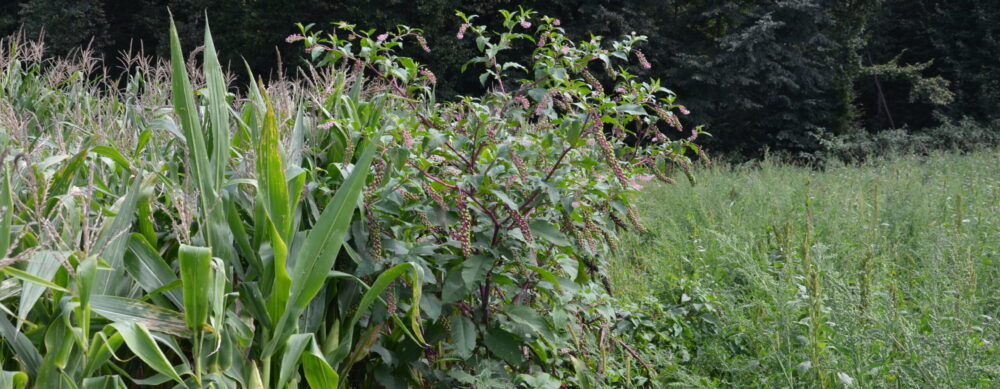Studying (emerging) agricultural weeds and the effects of climate change on agricultural settings is crucial for multiple reasons. Firstly, weeds can significantly impact crop yields and profitability by competing for resources. Understanding their biology and ecology helps develop effective weed control measures. Secondly, climate change poses new challenges to agriculture, affecting weed distribution and abundance. By studying these effects, we can identify shifts in weed populations and develop adaptation strategies. Climate change can also alter weed-crop interactions and the efficacy of management methods, leading to yield reductions. Additionally, weeds can serve as hosts for pests and diseases, threatening crop health. Research on agricultural weeds helps identify potential vectors and develop integrated pest management strategies. Moreover, studying weeds and climate change informs sustainable farming practices. In summary, studying agricultural weeds and climate change in agricultural settings ensures food security, sustainability, and economic stability. It enables effective weed control, understanding of shifting weed populations, assessment of weed-crop interactions under changing climates, and the promotion of resilient farming systems. This research is crucial for adapting to challenges and maintaining long-term productivity and sustainability.
Datura stramonium – jimsonweed, thorn apple
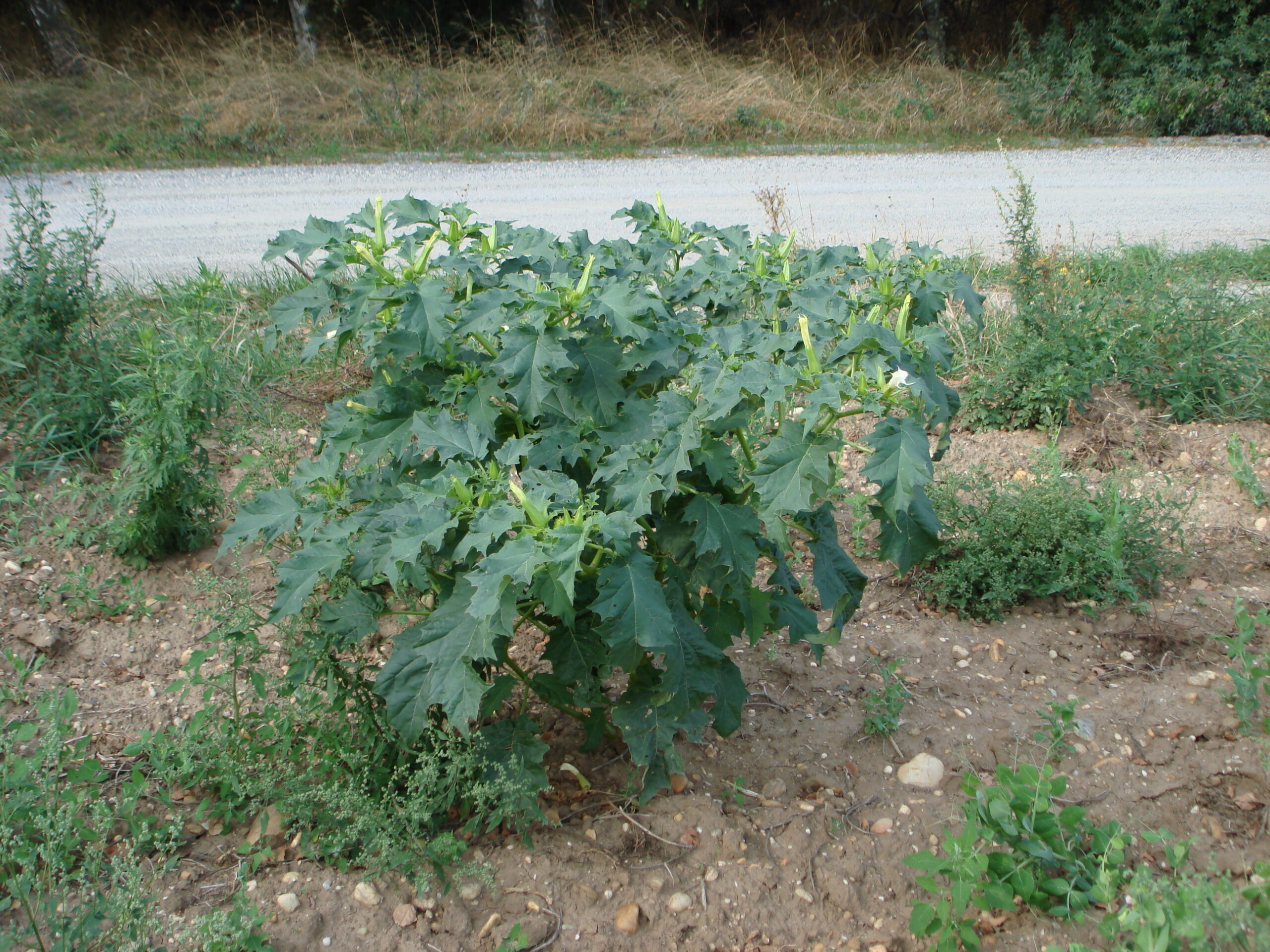
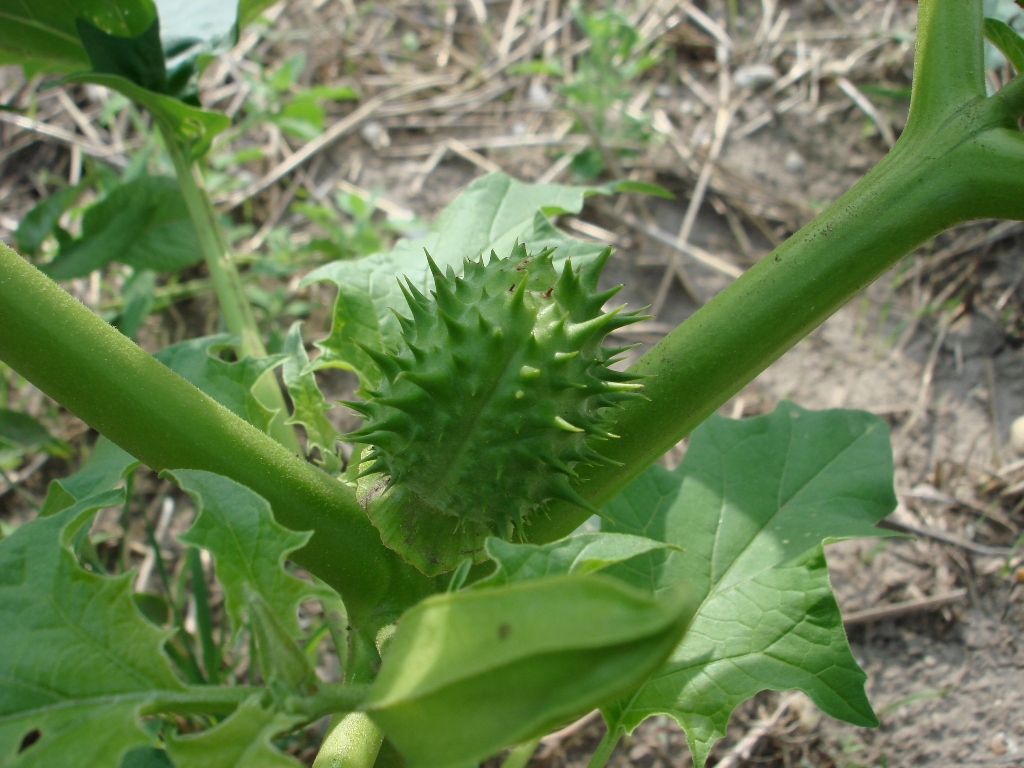

Datura stramonium, Datura for short, is an invasive plant species that has become a prominent agricultural weed in Europe. Introduced from the Americas, it has quickly spread across the continent. Datura is an annual plant that proliferates in various habitats, including cultivated fields, gardens, and roadsides. Its high seed production and long seed viability enable rapid colonization and outcompeting native vegetation. In agriculture, Datura poses challenges as it competes for resources and releases chemicals that hinder nearby plant growth. Control measures involve mechanical, chemical, and cultural methods. However, they can be labor-intensive, environmentally risky, and may vary in effectiveness. Preventive measures and early detection are crucial to managing Datura. Strict sanitation measures, such as preventing seed introduction and spread, and monitoring and removing young plants, are essential. Overall, Datura significantly impacts European agriculture, reducing crop yields, contaminating harvests and thus necessitating integrated management strategies that prioritize prevention and early detection.
Cyperus esculentus – yellow nutsedge, earth almond, tiger nut

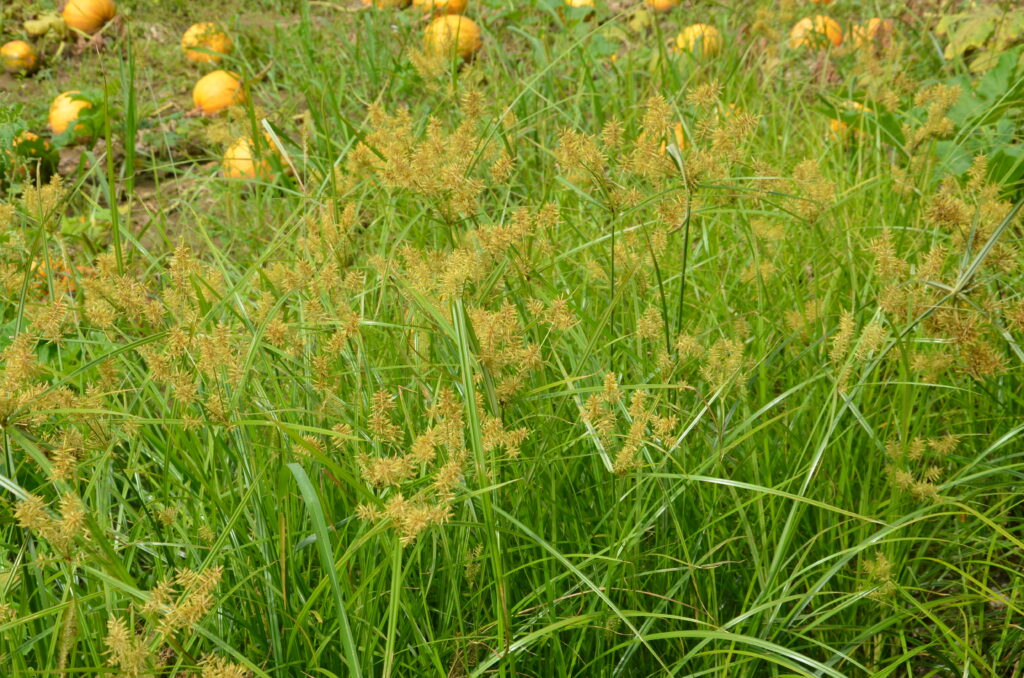

Cyperus esculentus, commonly known as yellow nutsedge, is a persistent weed species in Central Europe. This invasive plant thrives in a variety of environments, from agricultural fields to gardens, and poses significant challenges to local farmers and gardeners. Its rapid growth and ability to outcompete desirable crops make it a troublesome pest. Yellow nutsedge spreads through an extensive network of underground tubers, making it difficult to eradicate. Its distinctive triangular stems and yellowish-brown tubers are key identifying features. Central European farmers must employ various management strategies, including cultivation practices, herbicides, and mulching, to control this weed. Preventing its establishment through early detection and eradication is crucial, as Cyperus esculentus can reduce crop yields and impact overall agricultural productivity. Vigilance and proactive measures are essential to mitigate the impact of this persistent weed species on Central European agriculture.
Asclepias syriaca – common milkweed

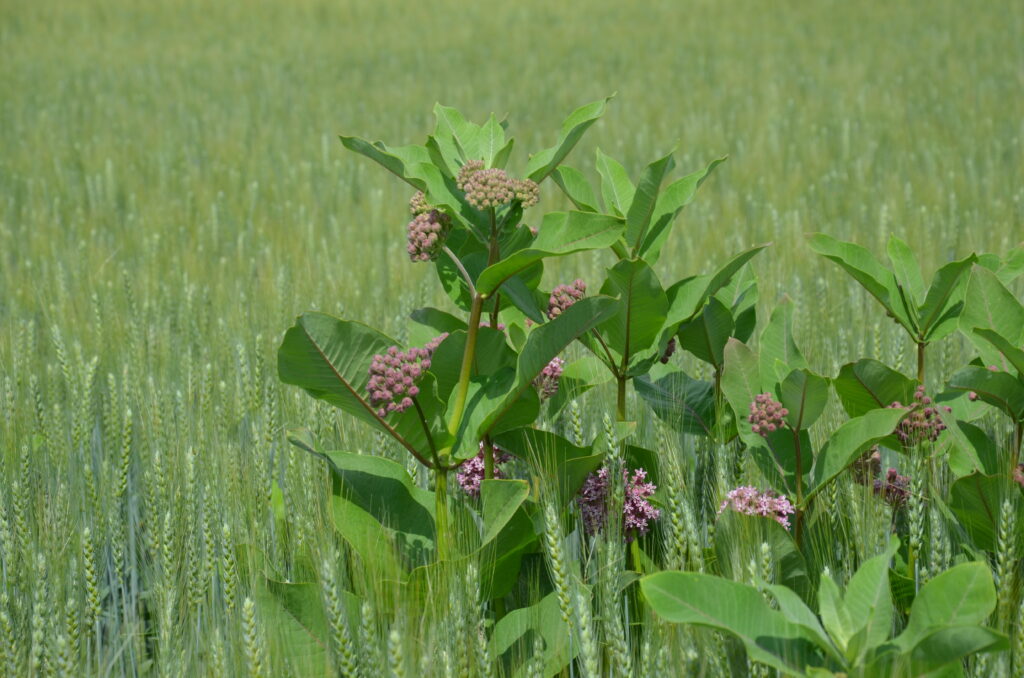
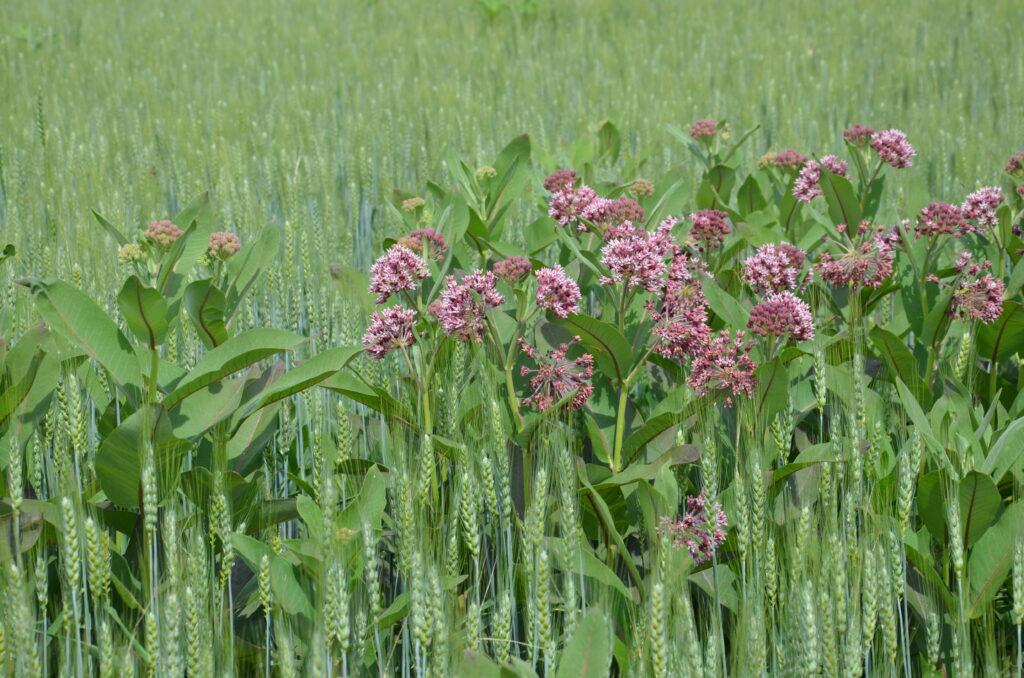
Asclepias syriaca, also known as common milkweed, is a prevalent agricultural weed in Europe originally native to North America. It is a perennial plant that thrives in a wide range of habitats, including agricultural fields, meadows, and roadsides. It spreads through an extensive underground root system and by producing numerous wind-dispersed seeds. In agricultural settings, Asclepias syriaca poses several challenges. Its extensive root system competes with crops for water and nutrients, potentially reducing crop yields. Additionally, the plant’s dense foliage can shade out crops and hinder their growth. Moreover, common milkweed is toxic to livestock, making it a concern for grazing areas. Controlling Asclepias syriaca in agriculture requires a multi-faceted approach. Mechanical methods such as mowing, tilling, or hand-pulling can help manage established plants, but they may not eliminate the extensive underground root system. Herbicides can be effective, but care must be taken to avoid damage to desirable crops and the environment.
Helianthus tuberosus – topinambur, Jerusalem artichoke


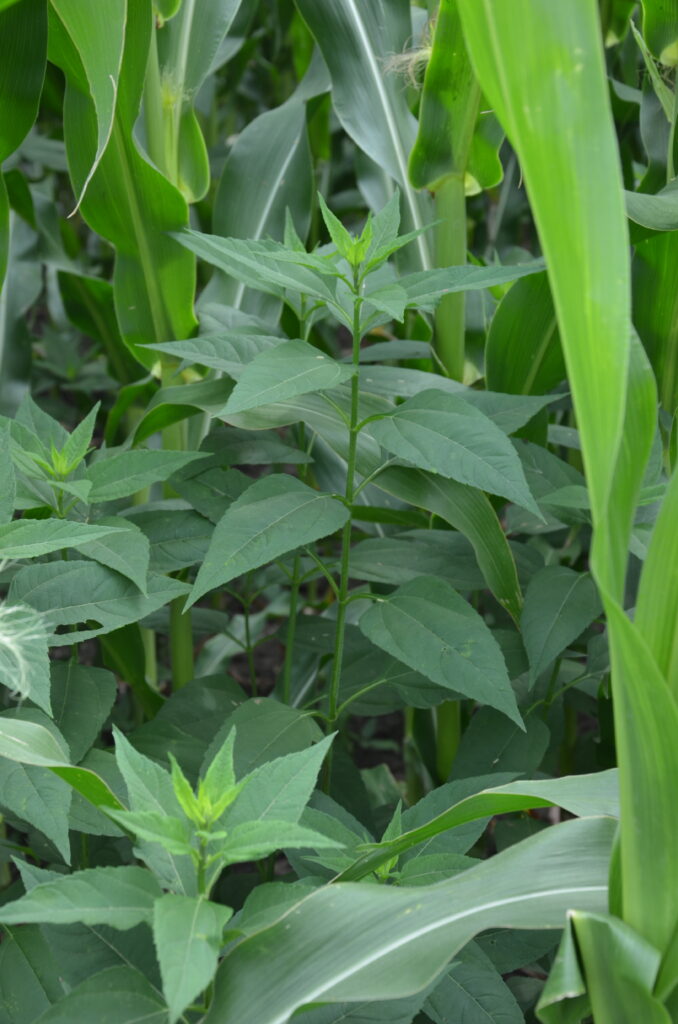
Helianthus tuberosus, commonly known as Jerusalem artichoke or sunchoke, is an agricultural weed that has become a concern in certain regions. Originally native to North America, it has been introduced to Europe and other parts of the world. It is a perennial plant that reproduces through tubers and seeds with a robust growth habit allowing it to quickly spread in agricultural fields, gardens, and disturbed areas. While Jerusalem artichoke has been cultivated for its edible tubers, its invasive nature and ability to rapidly spread make it problematic in agricultural settings. Its tall stature and dense foliage can shade out and suppress neighboring crops, negatively impacting their growth and productivity. Controlling Helianthus tuberosus as an agricultural weed can be challenging. Mechanical methods such as digging or tilling can help manage individual plants, but care must be taken to remove all tubers, as they can sprout and regrow. Herbicides may be used, but their effectiveness can vary, and careful application is necessary to minimize damage to desired crops. Preventive measures and early detection are crucial in managing Jerusalem artichoke populations. Implementing good field hygiene practices, such as preventing the introduction and spread of seeds and tubers, can help reduce its establishment and spread in agricultural areas.
